Making of Pongal Kolam
The Festival
Pongal is among the most popular Hindu Festivals of the year, celebrated for 4 days in South India, primarily in Tamil Nadu. A Harvest festival, Pongal is a sort of thanksgiving to Mother nature and celebrating the varied cycles of grain harvesting. This is the time when houses are cleaned, painted and decorated and Kolams (Rangoli in North India) are made of rice flour in the front yards of the houses and families don new clothes to mark the festivities. Pongal also has the cattle adorned with bells, flowers or beads, their horns painted and capped with metals.
The Pongal festivities start early morning and the first step is the Kolam adornment that’s drawn on the floor usually. Kolam or Rangoli as it’s popularly known is made as a symbol of welcoming guests to the house entrance in addition to the decoration bit, and is designed in a way that there’s a lump of cow dung with a 5 petal pumpkin flower, that denotes fertility and is offered as love to the ruling God/Goddess.
Variants & Patterns
Kolam is a type of drawing made for auspicious occasions by using chalk, rice flour, chalk or rock powder using organic colored powders. The design usually includes geometric lines, curved loops, drawn around a grid pattern of dots. Kolams are believed to invite prosperity to a household. In Tamil Nadu especially, women draw Kolams on the floor with rice flour, and replaced with a new design every day. Kolams are usually made on damp surfaces to hold the design better.
Besides decoration, Kolam is known to serve different purposes. In the past, they were drawn in coarse rice as a means to feed the ants, without walking too far for food; rice powder also invites birds and other small creatures to feed on it thus welcoming nature to an individual’s home every day. The Kolam designs range between symmetrical and measured line drawings around a pattern of dots to mold a free-form artwork and sealed shapes, so as to prevent evil or negative energies from entering the insides a home through any open Kolam space. On special occasions, apart from rice flour, limestone and red brick powder are also used in contrast, with chalk or vinyl stickers replacing them in modern day Kolams.
Pongal Kolam Designs To Try This Year
There is a large variety of Kolam Designs, which involved free-hand drawings of lines to make geometrical patterns. Then, there are dots arranged in a particular sequence, joined to make picture representations. Another form of Kolam is forming twisted chains by linking a loop with the next and ending up making beautiful designs with the original pattern. Typically, a matrix of dots from 4-18 is used for a Kolam, joined by straight or curved lines, or lines going around the dots ending in design including just curved lines. Here are few designs you can try out this Pongal.
Pongal Kolam with Rice Flour
Usually a Kolam is drawn with dry rice flour, ground fine. This makes it a tad difficult to hold onto the flour between the fingers and putting it in the Kolam compared to the Kolam powder. If you prefer the traditional ways of making a Pongal Kolam, here’s what you’d need – buy rice of low quality from a shop and put it in water for an hour at least. When you see the rice loosening up, take it all and grind it finely in a mixer or in a grinder. Now put the powdered rice particles in a cloth or a sheet to dry and put it under the sun. After drying, you can put the rice flour powder in a container to be used for Kolam later. Visit http://www.pongalfestival.org/pongal-kolam-patterns.html for some easy templates you can use make your own pongal kolam patterns.
Pulli Kolam
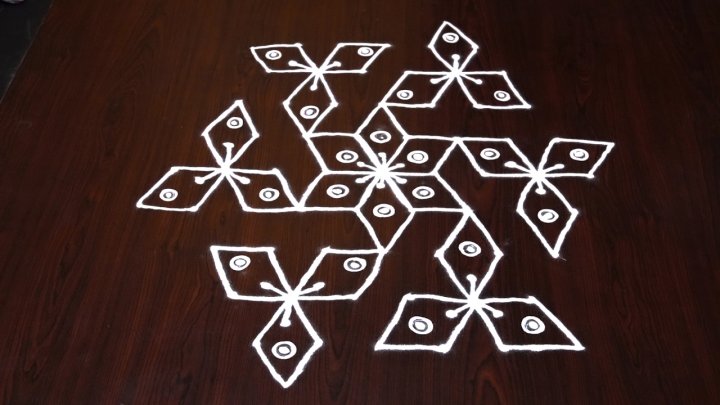
In Tamil, Pulli refers to dots, arranged in a particular pattern or order, joined to create a pictorial design. These kind of Kolams are usually drawn every day in homes at the main entrance, eventually creating animals, butterflies, birds, deer and various other designs. Here’s one design with the base design a matrix of dots 5*5. The first step is to create an equidistant grid of 5*5. After the first pattern is created, a line is drawn around the sequence of dots as depicted in the figure.
The next pattern overlaps the first pattern and is created in a similar way including another series of dots resulting in the finished Kolam. The pulli kolams are delicate and beautiful and are drawn according to one’s imagination.
Kambi or Line Kolam
Based on the essentials principles these Kolams are made with a line or Kambi, where free-hand lines are drawn to make geometrical patterns. Here’s one Line Kolam design, where you begin with a square center. Then form steps on all four sides, and connect them all as shown in the figure on all the four sides. You can make further design in the central square, filling it up with more squares and others with dots.
Pongal Kolam with Stencils
An easier way of making Kolam is with the help of stencils. For this you’d require – a styrofoam plate, a thick needle or nail and a pencil. To make the stencil, draw the pattern of your choice on the Styrofoam plate with a pencil and then poke holes along the outline of the pattern with a needle/nail. Remove any bit of the plate foam from the back without damaging the design at the end of the stencil preparation.
Now, placing the stencil on the floor or the surface you want to decorate, sprinkle the rice flour or Kolam powder over the stencil holes and carefully lift the plate off the surface without shaking it. Stencil Kolam
Apart from this DIY Kolam, you can also buy readymade stencils from the market which are essentially patterns shaped in such a way that all you need is to put them on the surface and color over the stencil. The hollow dots on the stencil enable the powder to seep through it onto the surface and take the design shape, while the remaining color remains gathered on the stencil. You can buy Kolam/Rangoli stencil kits from online portals as well ranging between Rs. 150-600. Stencil Kit
Pongal Kolam with Colors
Even though an authentic Pongal Kolam is made using rice flour or chalk. To make it more colorful, you can design it with different colors either by using dyed rice flour or kolam powder in color. There are different colorful designs you can explore through the Pongal festivities with varied theme that the colors can highlight. For instance, the first day of the festival is celebrated as the BOGHI festival in honor of Lord Indra for his blessings on the abundant harvest. A ceremonious Boghi Mantalu is observed where waste household items are immersed into a holy fire made of wood and cow dung cakes, which signifies the burning of agricultural waste and keeping everyone warm through the last leg of the winters. This can be depicted through a beautiful Kolam with different colors depicting the ritual and the bonfire.
Pongal Kolam with Dyed Rice
Kolam designs can be made with dyed rice or colored sand. All you need is plain rice, some food coloring, colored chalk, a beautiful design in print or on your phone, gloves, some paper, tea lights and a matchbox. To begin with, find a Kolam design on google image search or pinterest, and then depending on the design you’ve chosen, measure the dyes you’d require. You will need a cup of rice for every color you use and 2/3 for larger areas.
Mix you rice with the colors individually using gel food colors. Don’t overuse the dyes, for they’ll make the rice sticky. It’s best to use gloves when mixing to protect your skin from catching the color. Now, find a place where you’d like to create the Kolam. Using a chalk, draw the pattern on the floor, you can use a plate or the side of a box for making shapes or edges. Please remember the bigger or smaller your design is, the more or less rice you’d need. To make it easy to figure out which color goes where, fill your pattern with colored chalk or with a letter to designate the color, thereby completing your design drawing.
Now with a paper cone, which acts as a conduit to place the rice precisely in the pattern space, add rice to the cone away from the pattern. Now working your way from inside the pattern to the outside, add the rice to each specific slot within the pattern and spread the rice using your fingers. When you’ve completed the rice pattern, adorn it all with some tea lights and light them up.
Pongal Kolam Around the Stove
Pongal Kolam is drawn at a home in the patio, or the main entrance. A courtyard is usually the place where the flavorful pongal is made in a clay pot to mark the Pongal celebrations. So in some homes Kolams are drawn around the stove that is specially set up in the yard, and decorated with sugarcane and flowers as well.
Pongal Kolam with Rhinestones & Pearls
For Kolam made with Rhinestones and Pearls, you need 2 types of rhinestones in round and tear drop shapes in two different colors, 3 types of pearl strings in different sizes, a pencil, glue and an A1 sheet of paper. Begin, by drawing a kolam outline on the sheet of paper, draw a circle in the center of the sheet with the help of a circular container and trace around it. Next, draw a smaller circle inside the first circle and make tear-drop shaped petals around it to create a floral pattern.
Then glue the rhinestones and pearl strings on the outlines as shown in the figure, applying glue on the back of each drop shaped rhinestone, placing it in the innermost circle, adding them till you’ve covered the entire circumference. Then outline the stones with a pearl string.
Now, glue on a tier of round shaped stones along the pearl strings, then glue drop shaped stones on each of the petals as shown in the figure, leaving the petal tips open that will be filled with a round stone later. Now, apply glue on the inner side of the petals and stick the thinnest pearl string on the glue line, repeating the step for each petal. Next, using different rhinestones create small floral patterns in the center of each petal as depicted in the figure, closing each of the petal tips by placing a round stone, followed by a tear drop stone with its tip pointing outward. Finish the kolam with a pearl string along the outer lining of the middle circle and placing a tealight in the center of the floral pattern.
Fresh Flowers Kolam
For making a Kolam with flowers, you’ll need marigold flowers of two colors, some rose petals and some tubrose flowers. Begin with making a small circle of rose petals, encircling it with a dark colored circle of marigold flowers, then create a third tier by alternating between rose petals and light colored marigold petals parallel to each other at a distance, as depicted in the figure. Next, create another circle of dark marigold. You can extend the design by adding any number of layers you’d like, finally finishing the design by placing tuberose petals at the outermost tier and placing a tea-light in the center of the design.
Sawdust Kolam
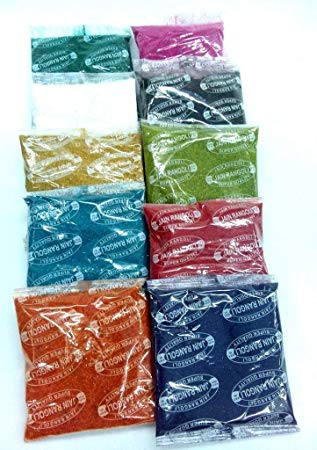
Sawdust is yet another material you can use to draw a Kolam. Heavy in character, sawdust spreads easy and can also float on water, hence you can be quite creative with its use. You can making floating kolam on still water with sawdust. Sometimes, sawdust is soaked into water based colors and dried to give different tints. If you choose to create a water kolam then, the color should be water soluble.
Here’s a design you can make with Sawdust. For the design you’d need a kolam pattern of your choice. Some white chalk for outlining and a colored sawdust. Choose the surface area you’d like to adorn with the Kolam and with your printed reference pattern before you, begin by drawing a cross like a plus or cross sign keeping it equal, thus resulting in four equal quadrants. We recommend starting from the center and draw on to one half of the quadrant, then move to repeat the same pattern on the other half. Try keeping the design small and simple so that you can replicate it easily. Now you can fill the pattern with colored sawdust. https://cdn2.stylecraze.com/wp-content/uploads/2013/06/pattern-pencil.jpg
You can buy colored sawdust set of 10 different colored packs for Rs. 184 from amazon.
Bonus Tip: Sikku Kolam Designs: Unique & Challenging
Sikku Kolams are quite popular in Kolam Designs, inspired by the Dot grid technique, however the chief feature of this type is that one really cannot make out the origin or the end point of the design, making it unique and challenging. Styled with powdered rice or colored powder and using fingers the Sikku Kolam come out as infinite loop patterns. Here are some beautiful and trending Sikku Kolam Designs to try your hands on.
- DIAMOND - The matrix is diamond shaped and curved lines have been used to create this beautiful design.
- CHAKRA – Resembling a chakra, this pattern is created on the dot grid with 8 sides, meeting at the center.
- NEER PULLI – A diamond shaped 10-4 dot grid, this design used simple curved designs to create floral motifs, which are then filled with color.
It Takes Practice To Get it Right
if you are new to drawing kolams, then you should not lose heart if your first attempts end in disaster! It takes time and lots of practice to get a clean and beautiful kolam. To get handy with the strokes and rhythm needed try practicing on paper first. Then you can graduate to drawing with chalk on ground. Once you are comfortable in these mediums, you can venture out to trying with rice flour. Good luck!

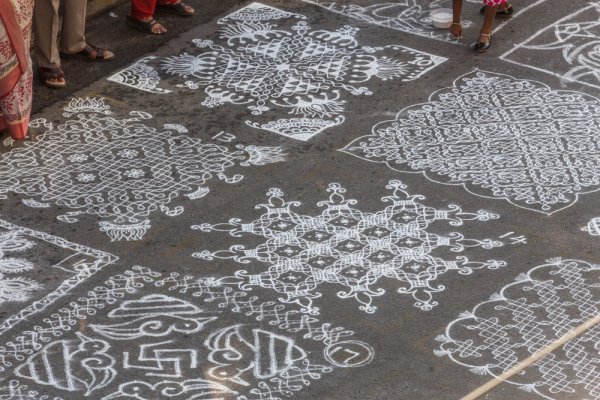
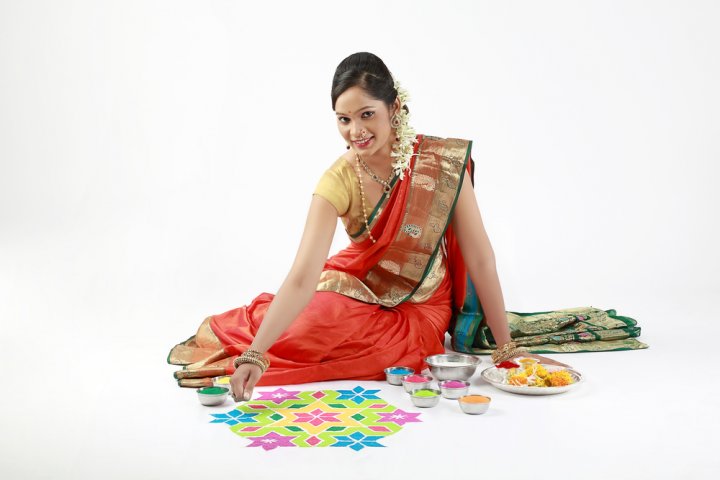

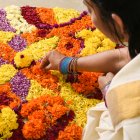

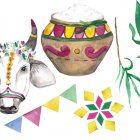
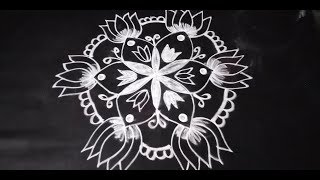
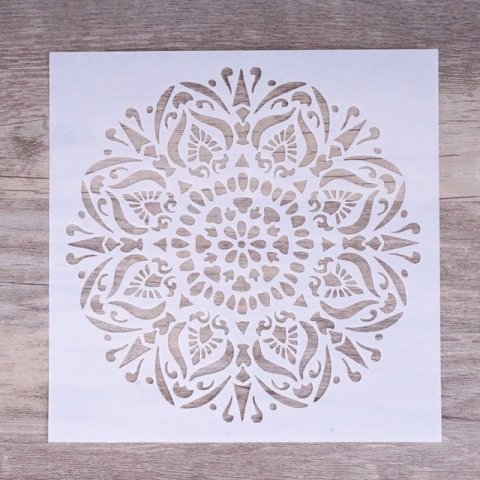
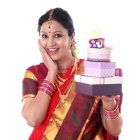
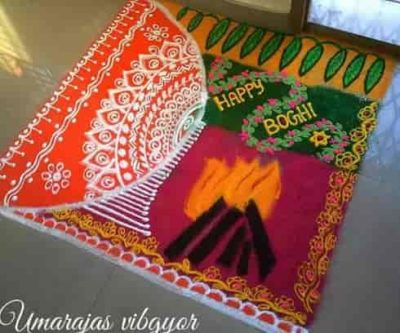
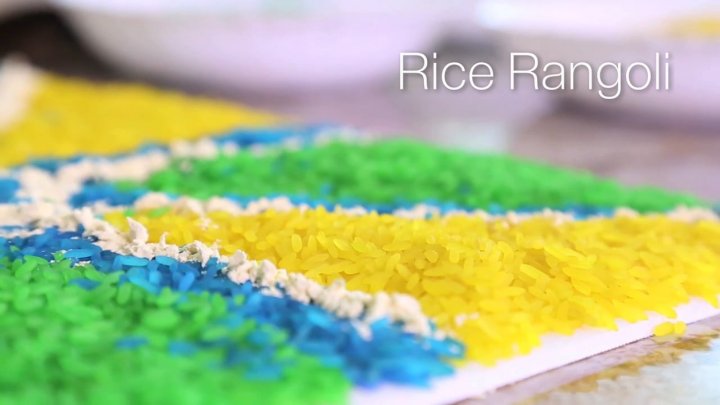


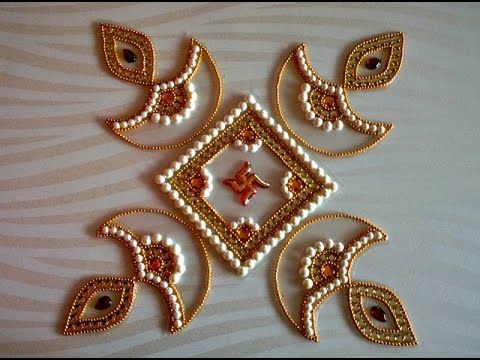
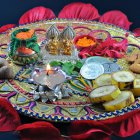
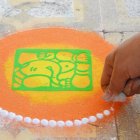
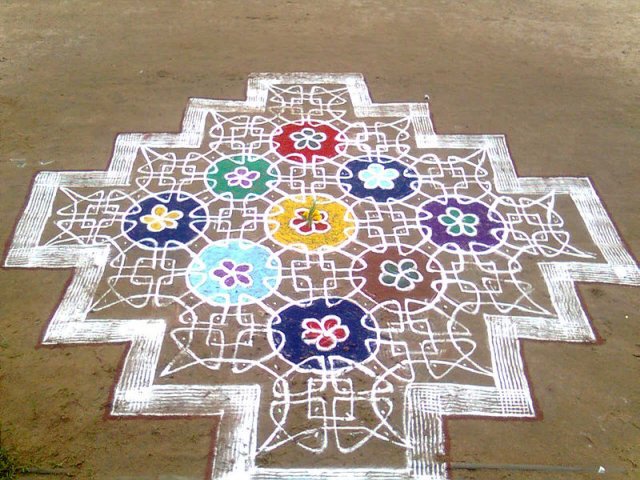
 Highlight the Best Facets of Your Incomparable Beauty: Discover the Best Face Highlighter Currently Available in India and Everything You Need to Know About Using Face Highlighters for Maximum Effect (2023)
Highlight the Best Facets of Your Incomparable Beauty: Discover the Best Face Highlighter Currently Available in India and Everything You Need to Know About Using Face Highlighters for Maximum Effect (2023)
 Forget the Blemishes and Get that Picture Perfect Flawless Radiance on Your Face: Check out the Best Foundations for Oily Skin Currently Available in India and Everything You Need to Know About Makeup Foundations (2023)
Forget the Blemishes and Get that Picture Perfect Flawless Radiance on Your Face: Check out the Best Foundations for Oily Skin Currently Available in India and Everything You Need to Know About Makeup Foundations (2023)
 Make Your Presence Felt Wherever You Go: Discover the Best Perfumes Under 2000 for Both Men and Women to Announce Your Arrival and Make Any Occasion Memorable (2023)
Make Your Presence Felt Wherever You Go: Discover the Best Perfumes Under 2000 for Both Men and Women to Announce Your Arrival and Make Any Occasion Memorable (2023)
 Protect Your Oily Skin from the Harmful Rays of the Sun: Discover the Best Gel Based Sunscreens for Oily Skin and Everything You Need to Know Before Buying One (2023)
Protect Your Oily Skin from the Harmful Rays of the Sun: Discover the Best Gel Based Sunscreens for Oily Skin and Everything You Need to Know Before Buying One (2023)
 Minor Blemishes and Wrinkles Affecting Your Confidence? Check out the Best BB Creams to Conceal Your Worries and Nourish Your Skin to Restore the Healthy, Radiant and Glowing Complexion Back Again (2023)
Minor Blemishes and Wrinkles Affecting Your Confidence? Check out the Best BB Creams to Conceal Your Worries and Nourish Your Skin to Restore the Healthy, Radiant and Glowing Complexion Back Again (2023)
